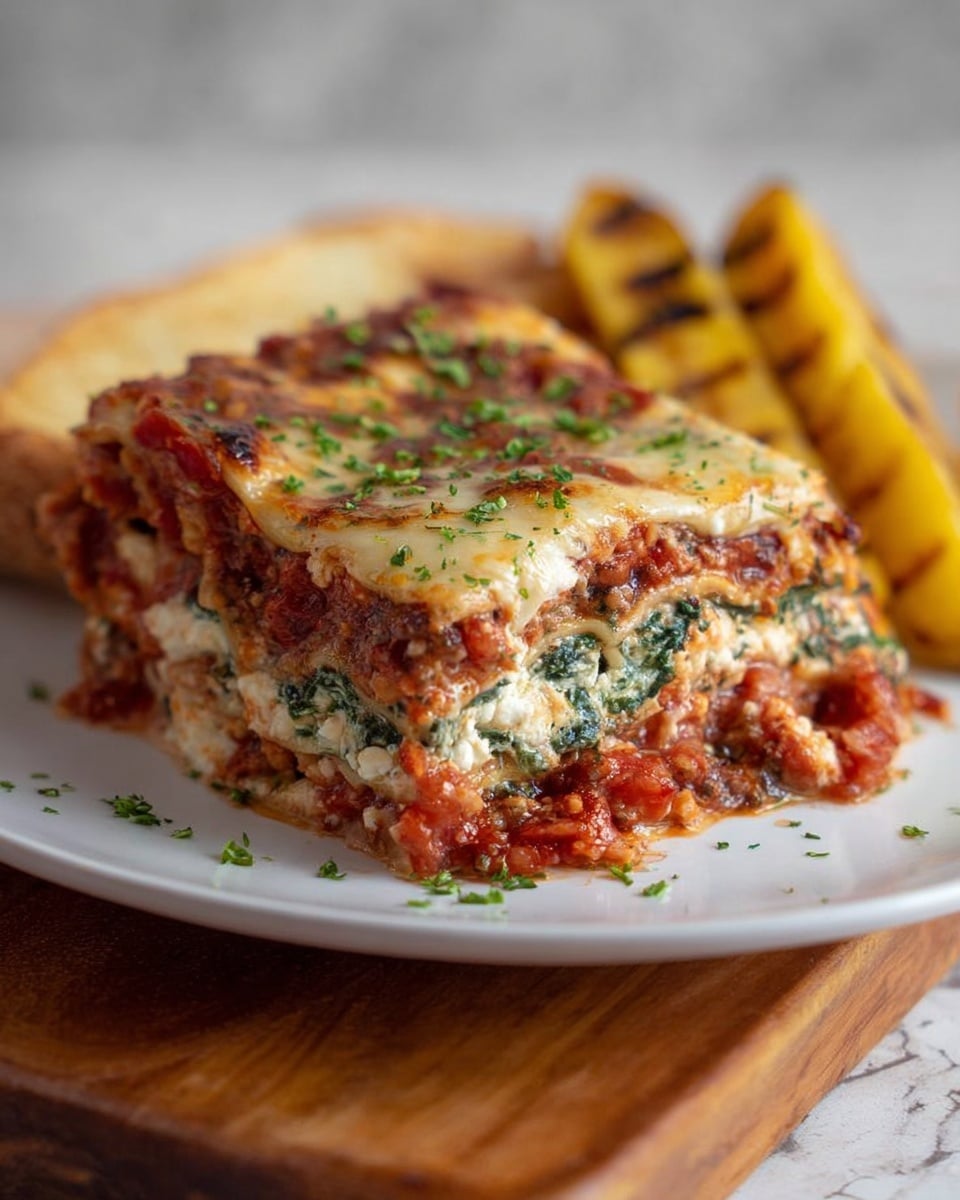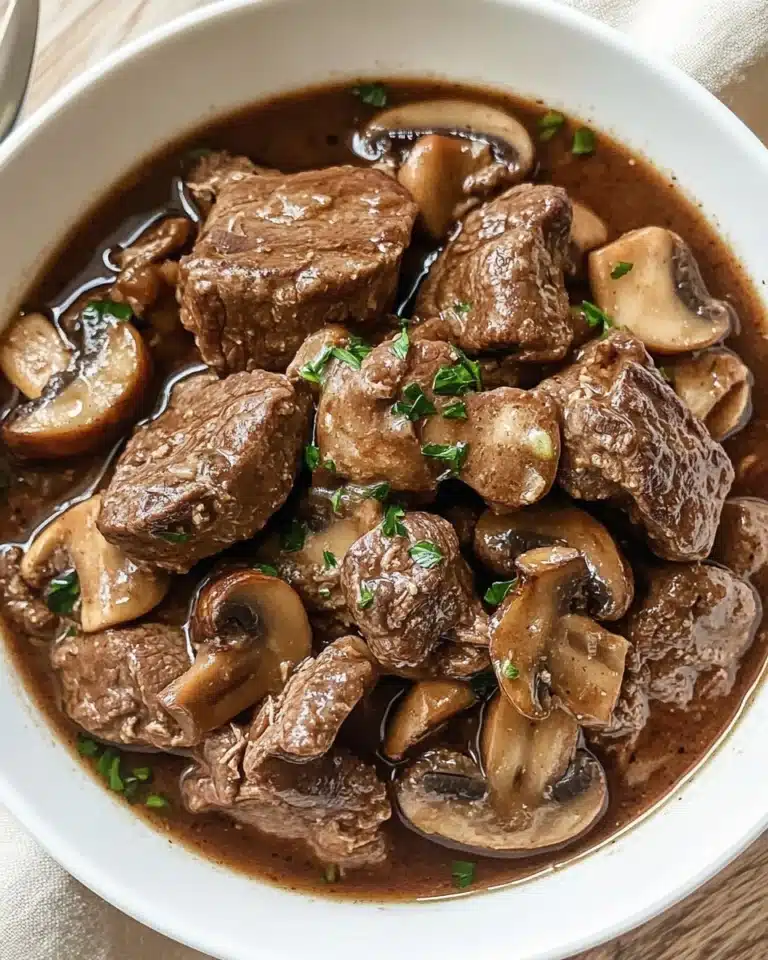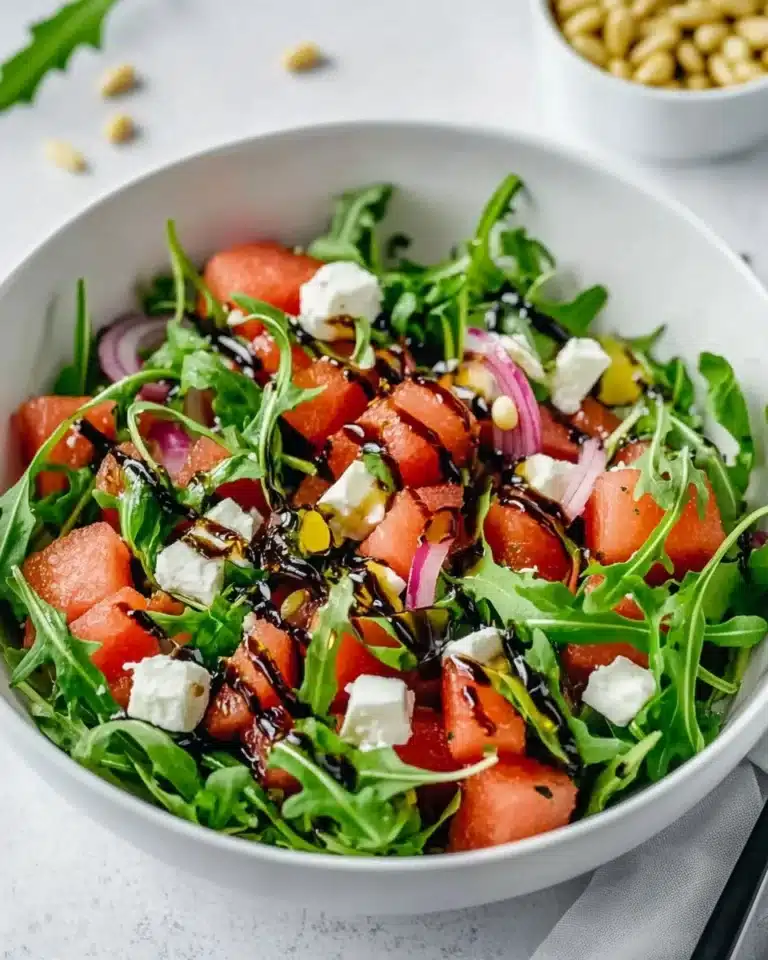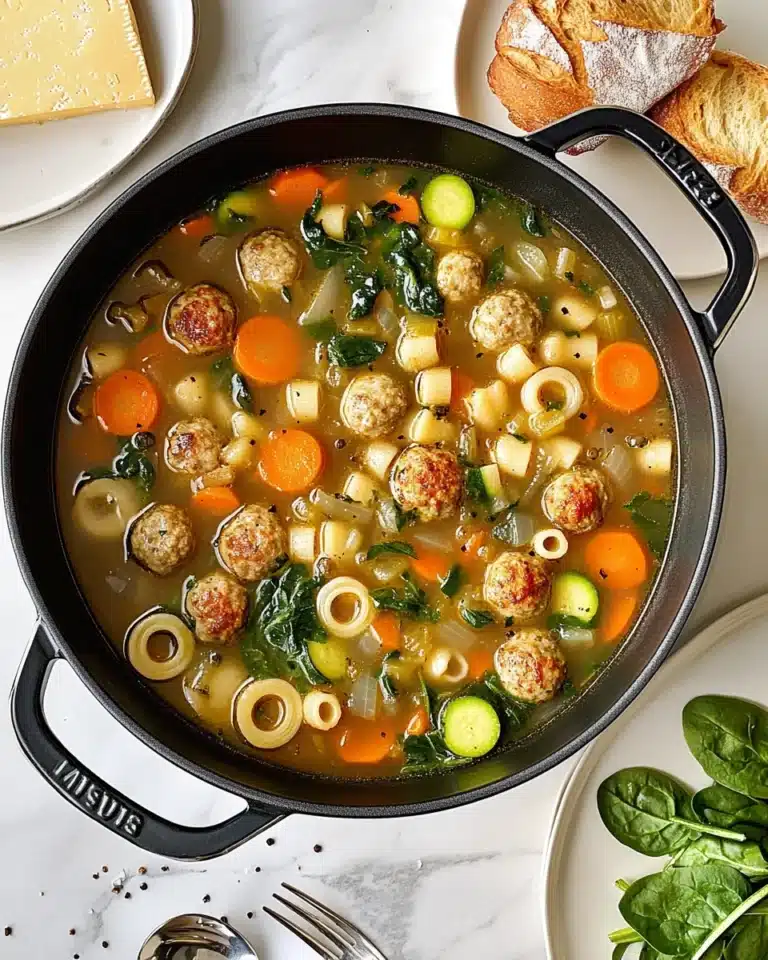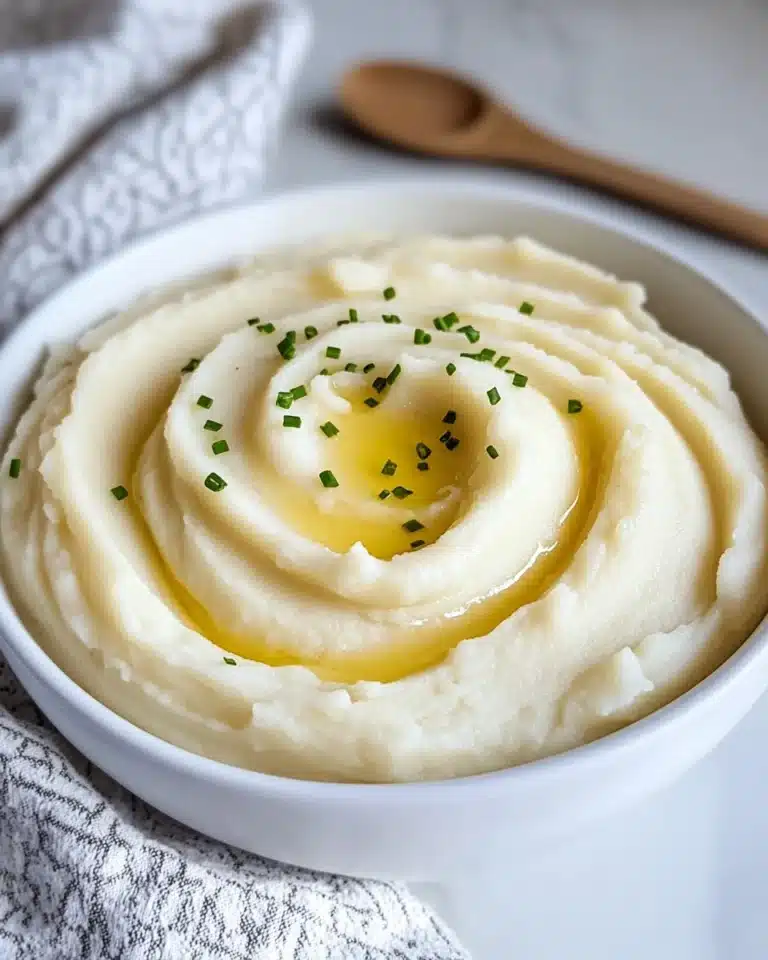I absolutely love this Epic Vegetable Lasagne Recipe because it transforms simple veggies into a rich, comforting, and satisfying meal. Whether you’re cooking for a cozy family dinner or impressing friends with homemade comfort food, this lasagne hits all the right notes — hearty, cheesy, and bursting with garden-fresh flavor.
When I first tried this recipe, I was amazed at how the layers of spinach ricotta and the veggie-packed tomato sauce came together perfectly without feeling heavy. You’ll find that it’s both impressive enough for a special occasion yet straightforward enough for a weeknight meal, especially if you prep some parts ahead. Truly, this Epic Vegetable Lasagne Recipe is a keeper in my kitchen and will be in yours too.
Why You’ll Love This Recipe
- Loaded with Vegetables: This recipe is packed with wholesome veggies that add texture, flavor, and nutrients.
- Creamy Spinach Ricotta: The combination of ricotta, mascarpone, and parmesan with spinach creates a luscious layer you’ll crave.
- Perfect for Make-Ahead: You can prepare the sauce and filling in advance, making dinner time a breeze.
- Family-Friendly Comfort: My family goes crazy for this lasagne, and I bet yours will too!
Ingredients You’ll Need
All the ingredients in this Epic Vegetable Lasagne Recipe work harmoniously, from the earthy veggies to the creamy cheeses, creating the perfect balance between freshness and richness. When shopping, I recommend picking good quality ricotta and fresh pasta sheets for best results.
- Ricotta: Use whole milk ricotta for creaminess; it’s the backbone of the spinach ricotta mixture.
- Mascarpone: Adds a velvety smooth texture to your spinach filling.
- Frozen Spinach: Convenient and packs more flavor than fresh in this recipe; just remember to squeeze out all moisture.
- Parmesan: Freshly grated gives that nutty, salty punch.
- Egg: Helps bind the ricotta mixture so it holds its shape in the lasagne.
- Salt, Pepper & Nutmeg: Classic seasonings that awaken the filling’s flavors.
- Tomato Passata: Use good quality passata for a smooth, rich base for the veggie sauce.
- Fresh Vegetables (Mushrooms, Red Pepper, Courgette/Zucchini & Aubergine/Eggplant): These add great texture and depth; finely diced is key.
- Celery, Carrots & Onion: The soffritto base for your veggie sauce; make sure they soften well.
- Garlic & Fresh Basil: Essential aromatics that lift the sauce to another level.
- Dried Oregano, Chilli Flakes, Sugar: Seasonings that balance acidity and add subtle heat.
- Olive Oil: For frying the veggies; I prefer extra virgin for flavor.
- Fresh Lasagne Sheets: I swear by fresh over dried — they bake up tender and hold the layers beautifully.
- Mozzarella: Shredded for gooey, melty cheese layers.
Variations
I love making this Epic Vegetable Lasagne Recipe my own by switching up the veggies and cheese based on what I have or the season. Don’t hesitate to make it yours!
- Mushroom Lovers: I’ve added extra mushrooms and even used wild mushrooms sometimes for a deeper umami flavor.
- Vegan Version: Swap ricotta with plant-based alternatives and use vegan cheese to enjoy a dairy-free lasagne.
- Seasonal Veggies: In the summertime, I add fresh tomatoes and zucchini blossoms; in winter, roasted butternut squash is delicious here.
- Spicy Kick: I sometimes increase the chilli flakes for a gentle heat — perfect if you like a little spice with your comfort food.
How to Make Epic Vegetable Lasagne Recipe
Step 1: Cook and Sweat the Vegetables
Start by heating a drizzle of olive oil in a large pot over medium heat. Add your mushrooms, zucchini, aubergine, and red pepper first — fry these until they’re soft and starting to char, which caramelizes their natural sugars and builds flavor. Transfer them to a bowl, then add a little more oil and toss in finely diced carrot, celery, onion, and garlic. Cook these until softened and lightly browned. Once both sets are done, return the first batch to the pot, mixing everything well to combine. This slow, attentive frying is key—it removes excess moisture and prevents a watery lasagne later.
Step 2: Make the Veggie Tomato Sauce
Pour the tomato passata into your pot with the veggies, then swirl out the jar with a cup of water to get every bit of that tomato goodness. Add in fresh basil, dried oregano, and season with salt, sugar, chilli flakes, and black pepper to taste. Let it all simmer gently on low heat for about 20-25 minutes until the sauce thickens nicely. If it’s still a bit runny, just give it a few more minutes. This simmering step develops the deep tomato flavor and melds all those lovely veggie oils into the sauce.
Step 3: Whip Up the Spinach Ricotta Filling
While your sauce is simmering, combine ricotta, mascarpone, egg, parmesan, salt, pepper, and a pinch of nutmeg in a large mixing bowl. I like using a hand mixer here to get it silky smooth and well incorporated. Then fold in the well-drained thawed spinach gently using a spatula until evenly mixed. This spinach ricotta layer is the creamy, luscious part of your lasagne that balances the tangy tomato sauce perfectly.
Step 4: Assemble the Lasagne Layers
Grab an 8×12-inch baking dish and spread a couple spoonfuls of veggie sauce on the bottom to stop the pasta from sticking. Now, start layering: pasta sheets, veggie sauce, spinach ricotta, and a generous sprinkle of shredded mozzarella — repeat for four layers total. The final layer should be pasta, topped with spinach ricotta, then mozzarella and a good dusting of parmesan on top. This layering creates a beautiful balance of flavors and textures in every bite.
Step 5: Bake and Rest
Bake your masterpiece in a preheated oven at 350°F (180°C) for 30-40 minutes until the top is golden brown and crispy. Don’t skip the 10-minute resting after baking — trust me, slicing into it too soon means the layers will still be watery and sloppy. Letting it rest allows everything to set perfectly, giving you that classic, clean lasagne slice everyone loves.
Pro Tips for Making Epic Vegetable Lasagne Recipe
- Drain Your Spinach Well: Squeeze out as much moisture as you can from the thawed spinach to avoid a soggy lasagne.
- Finely Dice Veggies: This ensures even cooking and avoids watery pockets in your sauce.
- Use Fresh Pasta Sheets: They create the best texture and maintain the layers without falling apart.
- Let it Rest Before Serving: Give your lasagne at least 10 minutes after baking for clean slices and perfect texture.
How to Serve Epic Vegetable Lasagne Recipe

Garnishes
I like topping my lasagne with a handful of freshly chopped basil or flat-leaf parsley — it adds a fresh, vibrant note that brightens the rich cheesy layers. A light drizzle of good olive oil or a dusting of extra parmesan right before serving also works wonders.
Side Dishes
To balance all that cheesy goodness, I usually serve this with a crisp green salad tossed in a tangy vinaigrette. Roasted garlic bread or a simple sauté of green beans with almonds also pairs beautifully.
Creative Ways to Present
For a dinner party, I like assembling the lasagne in individual ramekins for elegant single servings. Alternatively, sprinkling colorful roasted cherry tomatoes on top before baking provides a pretty pop of color that guests notice and love.
Make Ahead and Storage
Storing Leftovers
I store leftover lasagne in an airtight container in the fridge, and it keeps beautifully for 3-4 days. Just make sure to cover it well to avoid drying out, and it tastes just as good the next day.
Freezing
This lasagne freezes really well, which is a massive time saver. I like to freeze it before baking by assembling it in a freezer-safe dish and then thaw it in the fridge overnight before baking. It’s a lifesaver when you want homemade comfort without the prep.
Reheating
Reheat leftovers covered with foil at 350°F (180°C) for about 20-25 minutes until heated through. Removing the foil for the last 5 minutes crisps up the cheesy top, bringing back that fresh-baked magic.
FAQs
-
Can I use fresh spinach instead of frozen in this Epic Vegetable Lasagne Recipe?
Yes, you can! Just be sure to cook and drain the fresh spinach well to remove excess moisture before mixing it into the ricotta. Frozen spinach is a convenient shortcut here, but fresh works just as nicely if prepared properly.
-
Do I need to pre-cook the fresh lasagne sheets?
If you’re using fresh lasagne sheets that don’t require boiling, you can layer them straight into the dish, just as this recipe shows. However, always check your packaging instructions—some fresh pasta varieties might need a brief boil beforehand.
-
How can I make this Epic Vegetable Lasagne Recipe vegan?
To keep it vegan, substitute ricotta and mascarpone with your favorite plant-based cheeses or homemade cashew ricotta. Use a vegan mozzarella alternative, and skip the egg or replace it with a flax egg to help bind the filling.
-
Can I prepare this lasagne ahead of time?
Absolutely! Prepare and cool the veggie sauce and spinach ricotta filling ahead, then assemble the lasagne and refrigerate for up to 2-3 days before baking. Just bring it close to room temperature before baking or add extra time to the oven to ensure it cooks through.
-
What type of tomatoes work best for the sauce?
A smooth tomato passata or strained canned tomatoes work best for a silky sauce with great depth. Avoid chunky sauces as they can disrupt the texture of the layers in your lasagne.
Final Thoughts
This Epic Vegetable Lasagne Recipe is one of my favorite ways to celebrate seasonal veggies with a creamy, cheesy twist that everyone loves. It’s a dish that brings warmth and satisfaction to the table, whether a simple weeknight or special gathering. I hope you enjoy making and sharing this lasagne as much as I do — it’s truly a recipe that inspires happy cooking and even happier eating.
Print
Epic Vegetable Lasagne Recipe
- Prep Time: 30 minutes
- Cook Time: 1 hour 5 minutes
- Total Time: 1 hour 35 minutes
- Yield: 8 servings
- Category: Main Course
- Method: Baking
- Cuisine: Italian
- Diet: Vegetarian
Description
This Epic Vegetable Lasagne is a rich and hearty meat-free dish layered with a creamy spinach ricotta blend, a thick vegetable tomato sauce, and fresh mozzarella. Slow-simmered veggie sauce and fresh pasta sheets come together in a beautifully baked casserole that’s golden and crispy on top. A comforting Italian classic made with a variety of garden vegetables, perfect for a family meal or special occasion.
Ingredients
Spinach Ricotta
- 3x 9oz (250g) tubs of Ricotta
- 1x 9oz (250g) tub of Mascarpone
- 10.5oz (300g) Frozen Spinach, thawed and well squeezed
- 1 cup (80g) freshly grated Parmesan
- 1 Egg
- 1/2 tsp Salt
- 1/4 tsp Black Pepper
- 1/8 tsp Ground Nutmeg
Veggie Sauce
- 4 cups (1kg) Tomato Passata
- 4 cups finely diced veggies: mushrooms, red pepper, courgette/zucchini & aubergine/eggplant
- 2 ribs of Celery, finely diced
- 2 small/medium Carrots, finely diced
- 1 large White Onion, finely diced
- 3 cloves of Garlic, finely diced
- 1 small bunch of Fresh Basil, finely diced
- 2 tsp Dried Oregano
- 1/2 tsp Salt
- 1/2 tsp Sugar
- 1/2 tsp Chilli Flakes (or to taste)
- 1/4 tsp Black Pepper
- Olive Oil, as needed (about 1.5 tbsp total)
Lasagne
- 12oz (350g) Fresh Lasagne Sheets
- 3 cups (300g) Mozzarella, shredded
- 1/2 cup (40g) freshly grated Parmesan for topping
Instructions
- Prepare the Veggies: Heat a drizzle of olive oil in a large pot over medium heat. Add mushrooms, courgette/zucchini, aubergine/eggplant, and red pepper. Fry until soft and starting to char, then transfer to a side bowl. Add a little more oil, then add carrot, celery, onion, and garlic to the pot. Fry until softened and beginning to brown. Return the previously fried veggies to the pot and stir everything together.
- Cook the Veggie Sauce: Pour in the tomato passata, then add 1 cup (250ml) water to swill out the jar and pour that into the pot. Add finely diced basil and oregano. Season with sugar, salt, chilli flakes, and black pepper to taste. Let the sauce simmer on low heat for 20-25 minutes until it thickens into a rich consistency. If still watery, continue simmering for another 5 minutes.
- Make the Spinach Ricotta: In a large mixing bowl, combine ricotta, mascarpone, egg, grated Parmesan, salt, black pepper, and ground nutmeg. Use a hand mixer to blend until smooth. Fold in the thawed and well-drained spinach evenly with a spatula.
- Assemble the Lasagne: Preheat oven to 350°F (180°C). In an 8×12 inch baking dish, spread a few spoonfuls of veggie sauce at the bottom to prevent sticking. Begin layering as follows: pasta sheets, veggie sauce, spinach ricotta, then shredded mozzarella. Repeat this layering for a total of 4 layers of pasta and 4 layers each of sauce, ricotta, and mozzarella. Finish the top layer with pasta sheets, spinach ricotta, mozzarella, and sprinkle with Parmesan.
- Bake & Serve: Bake the assembled lasagne in the preheated oven for 30-40 minutes until the top is crispy and deep golden. Remove from oven and allow to rest for 10 minutes before slicing and serving. Resting is important to prevent a watery texture and help the lasagne set.
Notes
- Spinach: Frozen spinach adds a more intense flavor and saves the step of cooking fresh spinach. Make sure to thaw and squeeze out as much water as possible to avoid watery lasagne. Chop roughly if not pre-chopped.
- Veggies: The recipe uses a mix of mushroom, pepper, zucchini, aubergine, carrot, celery, and onion. Other vegetables like butternut squash, sweet potato, baby corn, and broccoli can be substituted. Finely dicing the vegetables and cooking them until moisture evaporates is key to avoid soggy lasagne layers.
- Lasagne Sheets: Fresh sheets are preferred for better texture and integrity of the lasagne. If using dried sheets, check if precooking is necessary and adjust sauce consistency accordingly as dried pasta absorbs more liquid.
- Make Ahead: The veggie sauce can be prepared in advance; cool completely before assembling. Store in the fridge for 2-3 days or freeze for up to a month. Bring to near room temperature before baking or extend baking time by 10 minutes to ensure even cooking.
- Calories: Nutritional values assume about 1.5 tablespoons of olive oil used throughout the recipe and serving size is based on dividing the whole dish into 8 portions.
Nutrition
- Serving Size: 1/8 of recipe
- Calories: 420 kcal
- Sugar: 8 g
- Sodium: 480 mg
- Fat: 22 g
- Saturated Fat: 10 g
- Unsaturated Fat: 10 g
- Trans Fat: 0 g
- Carbohydrates: 35 g
- Fiber: 6 g
- Protein: 20 g
- Cholesterol: 70 mg


